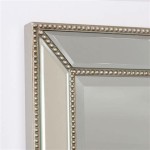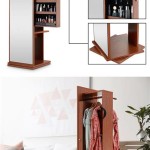Antique Washstands with Mirror and Towel Bar: A Comprehensive Overview
Antique washstands, particularly those featuring a mirror and towel bar, represent a fascinating blend of functionality and artistry, offering a tangible connection to bygone eras. These pieces, once essential in pre-plumbing homes, transcend their original purpose to become coveted collectibles and elegant additions to contemporary interiors. Understanding their history, characteristics, and value requires a keen eye and an appreciation for the craftsmanship of previous generations. This article delves into the key aspects of antique washstands with mirrors and towel bars, providing a comprehensive overview for enthusiasts and potential collectors.
The washstand emerged as a necessity in the 18th and 19th centuries, predating the widespread availability of indoor plumbing and bathrooms. It served as a designated space for personal hygiene, typically located in bedrooms or dressing rooms. Early models were simple, utilitarian pieces, often constructed from inexpensive woods like pine or poplar. As plumbing technology advanced, washstands evolved from purely functional items toward more decorative furniture pieces, reflecting the changing aesthetic preferences of the time. The addition of mirrors, towel bars, and decorative embellishments transformed them into symbols of status and refinement.
The designs of antique washstands varied widely, reflecting different periods and stylistic influences. The Victorian era, for example, saw washstands adorned with elaborate carvings, intricate inlays, and marble tops. Art Nouveau designs incorporated flowing lines and organic motifs, while the simpler lines of the Arts and Crafts movement emphasized the inherent beauty of the wood and the honesty of construction. Material choices also played a significant role, with mahogany, walnut, and oak being popular choices for more expensive pieces. The mirror, often an integral part of the design, varied in shape and size, reflecting the aesthetic preferences of the era. Towel bars, usually crafted from wood or metal, were designed to complement the overall style of the washstand.
Identifying and evaluating antique washstands necessitates a thorough understanding of their construction, materials, and stylistic features. Condition is a crucial factor, as is the originality of the piece. Washstands that have been heavily restored or altered may be less valuable than those that retain their original features and patina. Examining the joinery, hardware, and finish can provide clues about the age and authenticity of the piece. Furthermore, knowledge of different furniture styles and periods helps to determine the provenance and relative rarity of a particular washstand.
Identifying Key Style Elements and Periods
Understanding the stylistic elements associated with different periods is crucial for accurately identifying and appreciating antique washstands with mirrors and towel bars. Each era left its distinct mark on furniture design, reflecting prevailing aesthetic tastes and technological advancements. Recognizing these nuances allows collectors to discern genuine antiques from reproductions and assess their historical significance.
The Empire style, popular in the early 19th century, often featured washstands with heavy, blocky forms and classical motifs. Mahogany was a favoured wood, and embellishments might include gilded accents or ormolu mounts. Mirrors tended to be rectangular and substantial, complementing the overall grandeur of the style. Victorian washstands, on the other hand, embraced a more ornate and eclectic aesthetic. Carved details, turned legs, and marble tops were common features. The mirrors often had elaborate frames, and the towel bars might be made of brass or other decorative metals. Sub-styles within the Victorian era, such as Eastlake and Renaissance Revival, further influenced the design of washstands during this period.
The Art Nouveau period, spanning the late 19th and early 20th centuries, introduced flowing lines, organic forms, and naturalistic motifs to washstand design. Mirrors were often shaped to mimic flowers or vines, and the overall aesthetic was characterized by asymmetry and a sense of movement. The Arts and Crafts movement, in contrast, emphasized simplicity, functionality, and the beauty of natural materials. Washstands from this era often featured clean lines, exposed joinery, and minimal ornamentation. Oak was a favoured wood, and the emphasis was on craftsmanship and durability.
Furthermore, the Edwardian era, though brief, saw a shift towards lighter, more elegant forms. Washstands from this period often featured painted finishes and delicate details. The mirrors might be oval or rectangular, with simple frames. Understanding these stylistic nuances enables collectors to accurately assess the age, provenance, and value of antique washstands.
Assessing the Condition and Authenticity of Antique Washstands
Determining the condition and authenticity of an antique washstand is paramount to evaluating its value and making an informed purchasing decision. A thorough inspection involves examining various aspects of the piece, including its structural integrity, finish, hardware, and overall originality. Any signs of damage, repair, or alteration should be carefully noted, as they can significantly impact the value of the washstand.
Begin by assessing the structural integrity of the washstand. Check for any signs of warping, cracking, or loose joints. Gently rock the washstand to ensure that it is stable and does not wobble. Examine the legs, stretchers, and other structural components for any evidence of repair or replacement. Pay close attention to the joinery, as it can provide clues about the age and quality of the piece. Dovetail joints, for example, are often indicative of higher-quality construction. Examine the mirror for any signs of silvering loss, cracks, or damage to the frame. The hardware, including knobs, pulls, and towel bars, should be original to the piece and in good working order. Replacements can detract from the overall value and authenticity of the washstand.
Next, carefully examine the finish of the washstand. Original finishes are highly desirable, as they contribute to the overall patina and character of the piece. However, many antique washstands have been refinished over the years, which can diminish their value. Look for signs of wear and tear that are consistent with the age of the piece. Minor scratches, dents, and imperfections are to be expected and can add to the character of the washstand. However, significant damage or excessive wear may indicate that the piece has been heavily used or poorly maintained. Determining whether the finish is original or a later addition requires a trained eye and an understanding of historical finishing techniques.
Finally, consider the overall authenticity of the washstand. Compare the style, materials, and construction techniques to those typically associated with the period in which the piece was supposedly made. Consult reference books, online resources, and experts in antique furniture to gain a better understanding of the characteristics of different styles and periods. Be wary of washstands that appear to be too new or that incorporate elements from different periods. A thorough assessment of the condition and authenticity of an antique washstand is essential for making a sound investment and appreciating its historical significance.
The Market Value and Care of Antique Washstands
The market value of antique washstands with mirrors and towel bars is influenced by a multitude of factors, including their age, rarity, condition, style, and provenance. Understanding these variables is crucial for both buyers and sellers in the antique furniture market. A well-preserved washstand from a desirable period and style will typically command a higher price than a similar piece in poor condition or from a less sought-after era.
Rarity plays a significant role in determining value. Washstands with unique designs, unusual materials, or documented provenance are often highly prized by collectors. Pieces that are attributed to well-known furniture makers or that have a documented history of ownership can also command premium prices. The condition of the washstand is paramount. Pieces in excellent original condition are generally more valuable than those that have been heavily restored or altered. However, sympathetic restoration that preserves the original character of the piece can also enhance its value.
Different styles and periods also have varying degrees of desirability. Victorian washstands, for example, are often more readily available than those from earlier periods, such as the Federal or Empire eras. Art Nouveau and Arts and Crafts washstands are also highly sought after by collectors due to their distinctive designs and historical significance. Understanding the prevailing market trends and the relative scarcity of different styles is essential for accurately assessing the value of an antique washstand.
Proper care and maintenance are essential for preserving the value and longevity of antique washstands. Avoid exposing the washstand to direct sunlight, extreme temperatures, or excessive humidity, as these can damage the wood finish and structural integrity. Regular dusting with a soft cloth will help to prevent the buildup of dirt and grime. Avoid using harsh cleaning products or abrasive materials, as these can scratch or damage the finish. For more stubborn stains or dirt, consult a professional furniture restorer. Periodically inspect the washstand for any signs of insect infestation or wood rot. Address any problems promptly to prevent further damage. By following these simple guidelines, owners can ensure that their antique washstands remain beautiful and valuable for generations to come. Regular waxing will help to protect the finish and enhance its natural beauty.

Oak Washstand Antique Furniture Redo Wash Stand

Antique Wash Stand With Pitcher Basin Mirror Towel Racks

Antique Oak Serpentine Washstand Commode With Towel Bar Brass Hardware Pulls

Solid Oak Washstand With Mirror And Towel Bars Bar Antique Furniture

Antique Wash Stand With Towel Bar

Antique Washstand With Towel Bar My Stuff S Content And Estate Specialists

Antique Chestnut Washstand Dry Sink Cabinet With Mirror And Towel Bars 460068312

Antique Washstand With Towel Rack And Knapp Joint Drawers

Wash Stand W Mirror Pathway Market Gr

Antique Victorian Oak Washstand Chest With Mirror Bucks County Estate Traders







